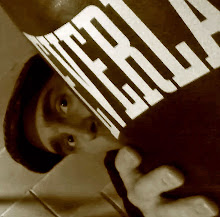Even the tiniest pebble cast into the deepest ocean leaves a trace. So it was with the startling discovery of an otherwise unremarkable piece of rock bearing the marks of time, the elements, and man.
Scientists from around the world, experts from every field gathered to measure it, weigh it, irradiate it, drill it, sniff it, shave it, immerse it, and even taste it. Their examinations continued for years on end while an endless debate raged throughout the academic community. While no one could agree on what exactly it was or where it came from, everyone agreed that it was undoubtedly the oldest existing piece of writing on the face of the earth.
You could not see them with the naked eye and you could only barely feel them with the tips of your fingers, but there were characters etched into the face of the stone. Authorities on everything from Braille to Hieroglyphics; Celtic runes to 21st Century computer encryption; Aboriginal Dreamtime paintings to the pre-historic literature of the Indus River Valley; all took their best shot at deciphering the “Water Stone” as it came to be called. Researches would shrug their shoulders and jokingly claim that the rock was “older than water.” They were not far from the truth.
Many years passed by with little progress on the mystery of the stone. It was still subjected to the same vigorous scrutiny as before and contested with the same fervor among archaeologists and anthropologists. It just no longer seemed newsworthy to the general public. It would have remained so if not for the eventual unlocking of the Water Stone late one evening and the sobering message recorded there.
There must have been nearly two-hundred people crammed around that little table as the world’s leading authority on cultural linguistics began to read from the stone. After years of electron microscopes and centrifuges, lasers and isotopes, priceless scrolls and antiquated tablets, it all came down to a breathless whisper that shattered the silence of the ages.
“Well, what does it say?” Someone spoke up and everyone crowded in.
“Ladies and gentlemen,” the scholar stalled for time. He was trying to make sense of what he had just read. “As near as we are able to ascertain, the words inscribed on the face of this rock read as follows: ‘Noah was right.’”
Just as it was in the days of Noah, so too it will be in the days of the Son of Man. –Luke 17:26
Daily Prayers for Moravians Has Moved!
-
Please note: The Daily Prayers for Moravians Blog has now moved to
https://www.moravian.org/daily-prayers-for-moravians/. I have now ceased
publishing here...
5 years ago







No comments:
Post a Comment